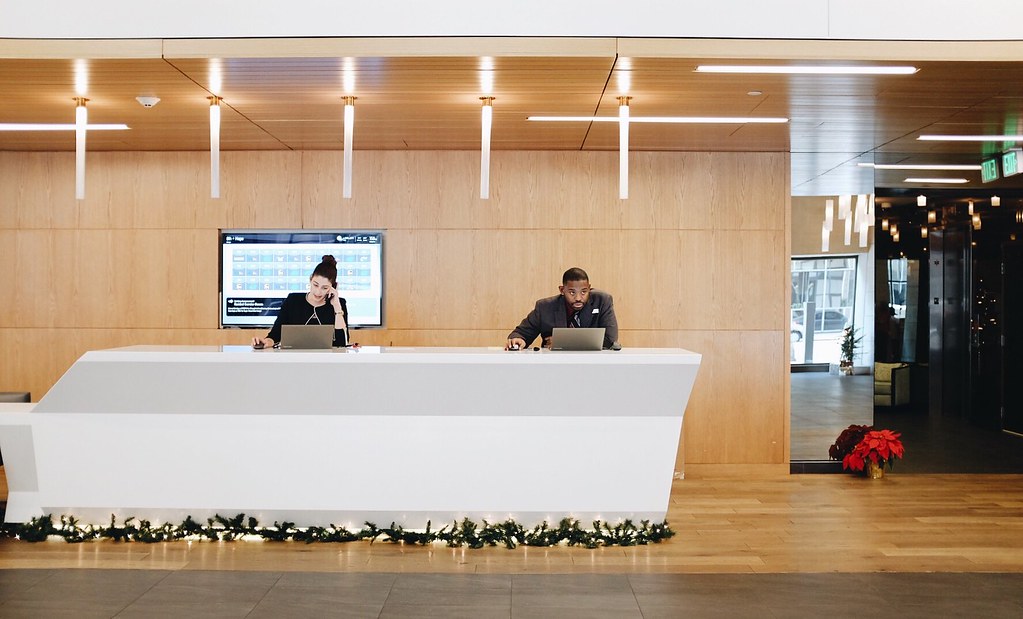
Living in Downtown Los Angeles
What it was like then vs. What it is like today
When Abraham Hernandez and his brother decided to move to downtown Los Angeles in 2006, their friends and family could not understand why. First there was the question of safety. They warned Hernandez about staying out too late and walking alone at night. Then there was confusion as to why anyone would voluntarily choose to live in a gritty neighborhood that is notoriously known for its high crime rates and a large homeless community. In the first few years of the 21st century, downtown Los Angeles still topped the list of neighborhoods parents did not want their children venturing into.
"The main population of downtown 10 years ago was literally only people who work here. The way life was back then was you come to work, and then downtown dies after 6 p.m.," Hernandez, a sales consultant at Premier Real Estate, said. "People would ask me, 'Oh, downtown. What do you do there?' 'Nothing.'"
In 2015, it is hard to imagine a quiet night in downtown Los Angeles. The recent revitalization of the city, which has been the focus of Councilman Jose Huizar's platform for years, has led to a huge transformation of what was once a cultural wasteland. Grocery stores, boutiques, construction sites and restaurants now line the streets of downtown. In addition to these new establishments is the boom of luxury apartments and million-dollar condominiums. With more than 10,000 units being built every year, the number of people who call downtown home is growing fast. In 2000, 27,849 people lived in downtown, according to the U.S. Census Bureau. By 2013, the population grew by 88 percent to 52,400, according to the Los Angeles Downtown Center Business Improvement District.
"[Downtown] is appealing for residents, developers and investors because there is so much to do," Alonzo Fields, a sales associate at Met Lofts said. "There are so many attractions. Every district has its own character and it’s becoming a destination. Also they’re all in walking distance so it’s super convenient."
Hernandez also believes walkability plays a huge role in pulling people to downtown. "People who work in other areas actually move here now because where they lived… they feel they have to drive everywhere and they're getting tired," he said. "The thing about real estate is you can't convince people to buy something. If they like the area they are going to migrate to it. That's what's happening here."
But the influx of new residents has been accompanied by a dramatic rise in rent. Rent is based on occupancy, availabilities, and supply and demand. However, it is not as simple as it seems, noted Janey Ha, a downtown leasing agent. Market surveys among competitors help determine the median cost per square footage, too.
"What's going to happen now is rent is going to keep going up and that's going to raise the city's rent, even in outlying areas," Hernandez said. "The apartments outside downtown used to be $600. Now it's about $1,000 based on downtown prices."

The Emerson, a luxury Bunker Hill apartment and the first piece of the long-delayed Grand Avenue megaproject, is one of the most expensive buildings to live in in downtown. A Related Rentals project, the building offers "spacious floor plans, professional stainless steel appliances, a 24-hour concierge, outdoor pool and spa, barbeque grills, a fitness center, a yoga studio and a private screening room" at $2,905 for a studio, the cheapest floor plan available.
The opening of The Emerson in 2014 caused rents in nearby apartments to increase. 255 Grand Apartments, formerly Grand Tower, was opened in 1989. With their new neighbor down the street, Hernandez said the building was pressured to renovate some of the old units and amenities, and are now bumping the rent up by about 25 percent. One of the people who have been affected by 255 Grand's rent hike is Hernandez's loan officer.
"He makes 100 grand a year and he was paying $2,500. Now they want $3,200. He's not like unemployed. He's a professional, successful loan officer and he's getting kicked out," Hernandez said.
This sense of competition to stay on top is felt by all residences in downtown. Spending on new development, remodels and room additions is expected to reach $7 billion by the end of the fiscal year — the highest in three decades, according to the Department of Building and Safety.
"The standard has been raised so high," Anthony George, a concierge at Met Lofts, said. "If you don't have a 24-hour concierge or a swimming pool in downtown, you can forget it."
One way to prevent increasing rent is to buy instead of lease. The Financial and Bunker Hill districts are home to some of downtown's premier condominiums. However, owning a home in downtown Los Angeles comes with its own cost. Surging demand, combined with a lull in condo construction, has resulted in a shortage, shutting out many buyers.

"People are more inclined to build an apartment, where they can pocket monthly rents than a condominium," Francisco Sanchez, Special Projects Project Manager at Swinerton Builders said. Sanchez works in the Financial District and lives in South Park. "Especially in this market, they know the demand is not going away anytime soon. There will always be people who are willing to pay."
The demographic of downtown residents have shifted to fit the marketplace. Leasing agents, real estate brokers and sales consultants describe them as "young professionals" who are "making good money."
Another huge factor are foreigners, who by overpaying, causes the flux in pricing. "Koreans, Chinese, Europeans," Hernandez said. "They're coming in, looking at a few units and just paying cash. They want to get the money out of their country so they don't mind losing 15 percent on overpaying."
Experts predict that rent and property value will only steadily increase. Billions of dollars are pouring into the city. More than 9,000 apartments and condominiums are under construction, according to the Downtown Center Business Improvement. As the trend continues, more people will leave the neighborhood, either because they are not able to afford the hefty price tag that comes with their apartment unit, or because they would rather become a homeowner in an outlying neighborhood.
"I love downtown. I’ve watched it bloom for almost 10 years to become the exciting place it is today," Sanchez said. A long-time resident of the neighborhood, Sanchez is moving to Echo Park once his house is complete. Echo Park is about 3 miles away from the Financial District, where Sanchez's office is located. "I cannot wait to become a home owner. One day, rent is going to reach an impossible amount. I'm bouncing now so I won't have to deal with that day."
Housing Options in the Financial and Bunker Hill Districts
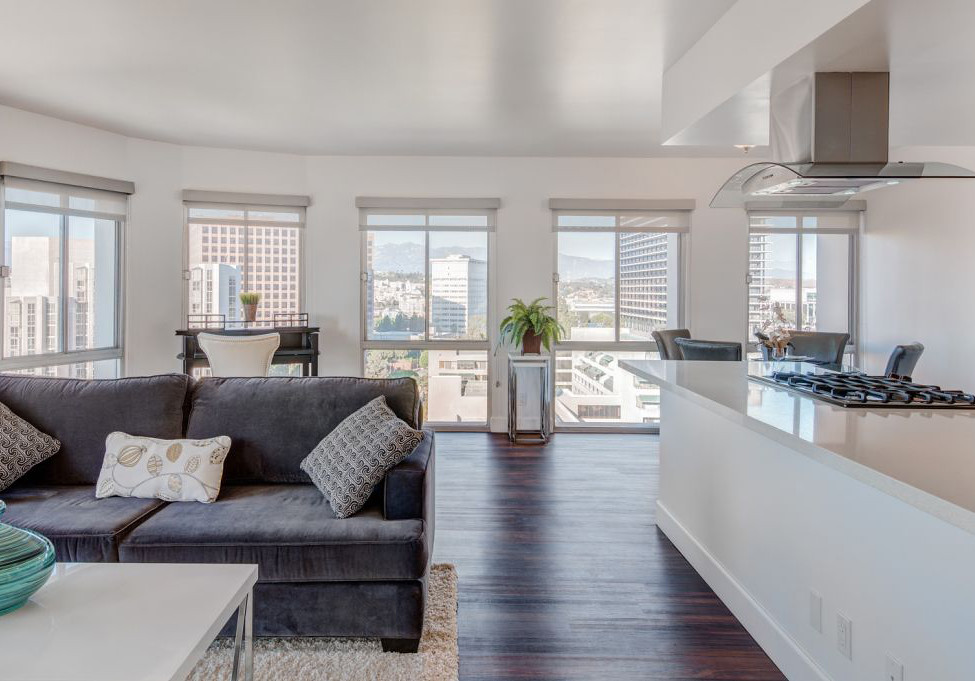
Bunker Hill Towers
One of downtown's oldest surviving apartment, Bunker Hill Towers has been around for 46 years now. In 1998, it was purchased by Essex Property Trust. This year, the building spent $76 million on the biggest renovation in the property's history. The budget per apartment unit is approximately $170,000, according to Los Angeles Downtown News.
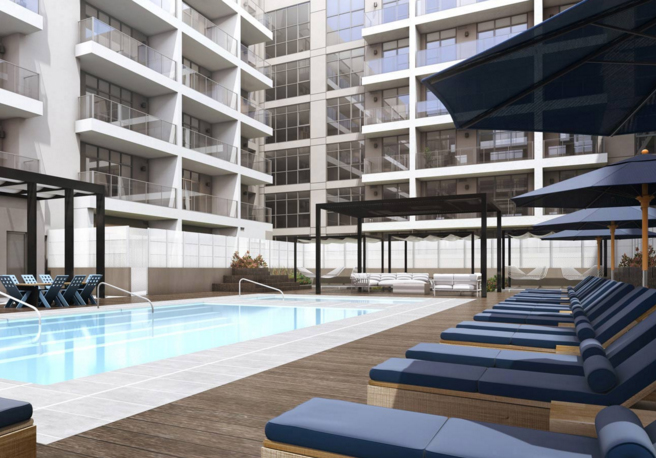
eighth & grand
With a recent opening in the fall of 2015, eighth and grand apartments is one of the Financial District's newest addition. Amenities at the building include a coffee shop, common area, two swimming pools, a 5,400-square feet fitness center, and the biggest Whole Foods in Southern California. Rent ranges from $2,105 to more than $5,000, with various floor plans.

The Emerson
The Emerson is located in Bunker Hill district, just a few steps away from downtown L.A.'s new contemporary museum, The Broad. Within walking distance of the building are MOCA, the Walt Disney Concert Hall and Bill Chait's new restaurant, Otium. The Emerson tops the list of downtown's most expensive homes, with studios starting at $2,905 per month.

Gas Company Lofts
Another Essex property, Gas Company Lofts is a restored historical landmark building in the south of the Financial District. The building features loft and two-bedroom apartment floor plans, a business center with free Wi-Fi, a concierge, and a recently upgraded resident lounge and game room. There are plans to renovate the fitness center and rooftop deck within the next year.

Library Court Lofts
Library Court Loft sits on top of two of the city's popular bars, The Library Bar and Sixth St Tavern, and is across the street from The Standard hotel. In 2004, Greystone Group invested $20 million into the building with the help of Brenda Levin, a historic preservationist. Today, the condominium features a 24-hour study hall, business center and a fitness gym.

Milano Lofts
Originally constructed in 1925 as the Edwards & Wildey building, Milano Lofts converted to a loft style residence in 2005. Located in the heart of the Financial Core of Downtown LA, the apartment offers extreme walkability to downtown's growing restaurant row on 7th street, the metro station, as well as various shopping destinations, such as FiGat7th.
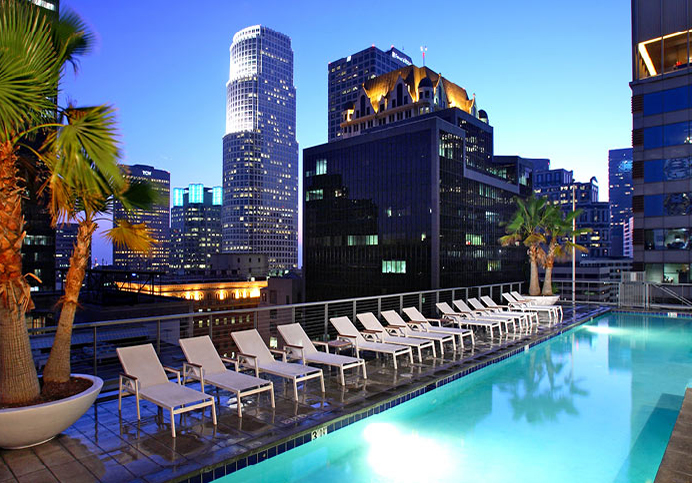
Pegasus
Pegasus is best known for its rooftop, which was renovated in 2011 by Mark Tessier Landscape Architecture. The rooftop features a 24-hour outdoor pool, private cabanas, kitchen and grill. Meanwhile, the first floor is home to Caffe Primo. But the best part about living here though might just be the VIP access to The Standard Hotel's bars on certain days of the week.

Promenade Towers
Promenade Tower in Bunker Hill district boast floor-to-ceiling windows, contemporary solariums and angular rooms with breathtaking views of downtown L.A. In addition to the expected amenities of downtown housing, Promenade Tower also offers an on-site convenience store and beauty salon. Floor plans start at studios and go up to 2BR apartments.

The Roosevelt
Once a condominium, The Roosevelt went into bankruptcy in 2009 before Greystar Avana Community purchased the building. It reopened in 2011 as an apartment after a $5 million renovation, and has been home to celebrities like David Arquette and the LA Lakers Paul Gasol and Lamar Odom. The building is located on top of the 7th Street/Metro Center station.

Sky Lofts
In 2006, the upper floors of Chase Plaza were converted into 132 lofts and named Sky Lofts. The first floor of the building was converted into a theater, a social room, retail and restaurants, making the condominium a coveted home for those looking to buy in downtown. Current listings start at $819,000 and go up to more than $1 million.

255 Grand
With an address so close to downtown's newest projects, like The Broad museum and the luxury apartment The Emerson, 255 Grand, formerly Grand Towers, is undergoing some renovations to revamp their amenities and units. With the renovations, rent will be bumped up to about 25 percent, according to Sales Consultant Abraham Hernandez.

655 Hope
655 Hope on the corner of Hope Street and 7th Street was originally built in 1964 as an 8-story office building. In 1985 it was modernized and expanded by Gensler Architects. Today, the building is a 17-storey, 80-units condominium, with floor-to-ceiling windows, a roof deck entertainment zone featuring a wet bar, and five two-storey Townhouse units.
Contributors
The people you heard from

Abraham Hernandez
Abraham Hernandez is a sales consultant at Premier Real Estates. He and his brother moved to downtown Los Angeles in 2006. Hernandez is an expert on housing in the city, with a particular focus on South Park and the Arts District.
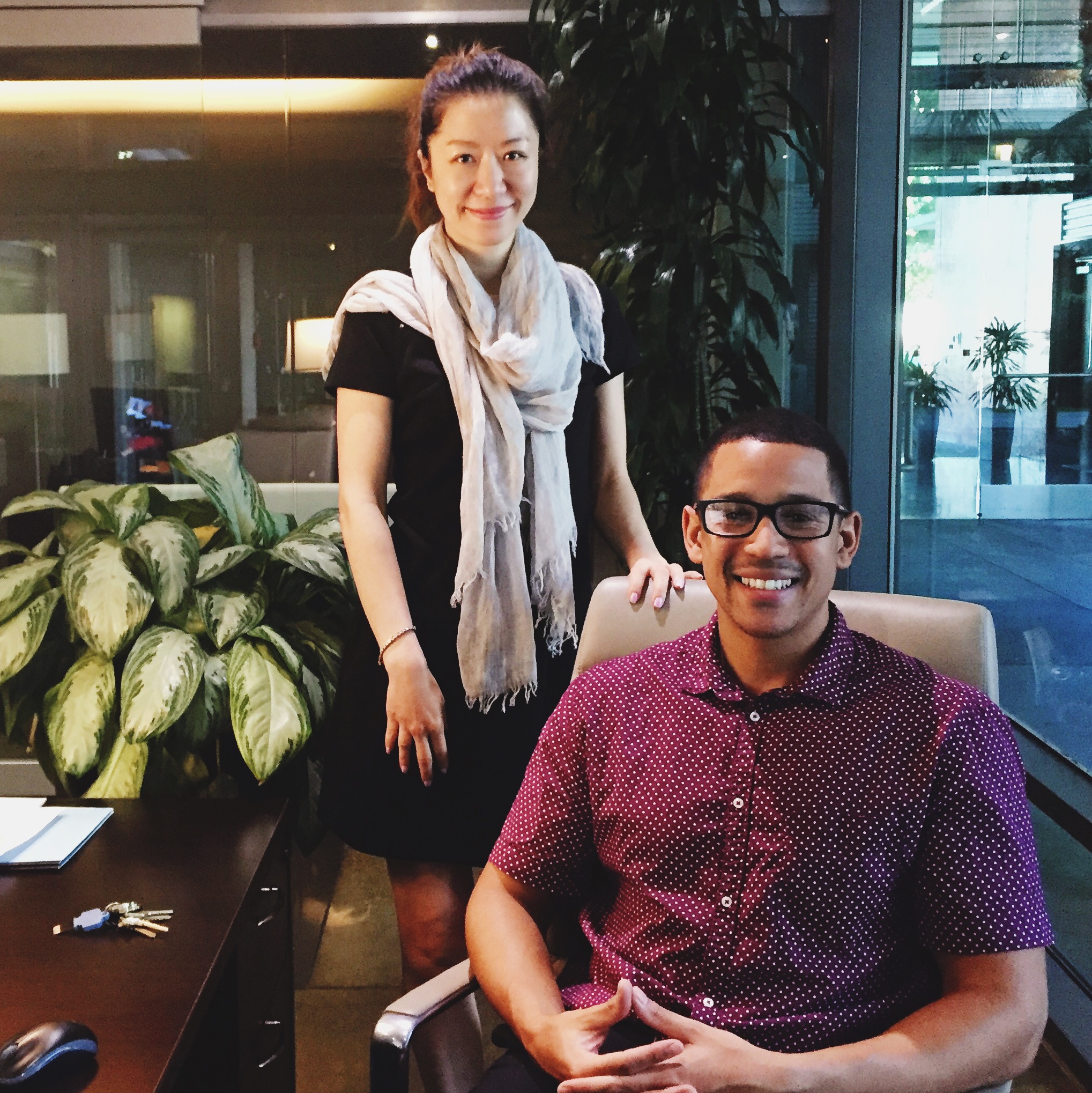
Janey Ha & Alonzo Fields
Janey Ha and Alonzo Fields have worked together for more than a year now as a leasing agent and sales associate, respectively. Ha has lived in downtown for 20 years, moving between districts before finally settling in in the Financial District.
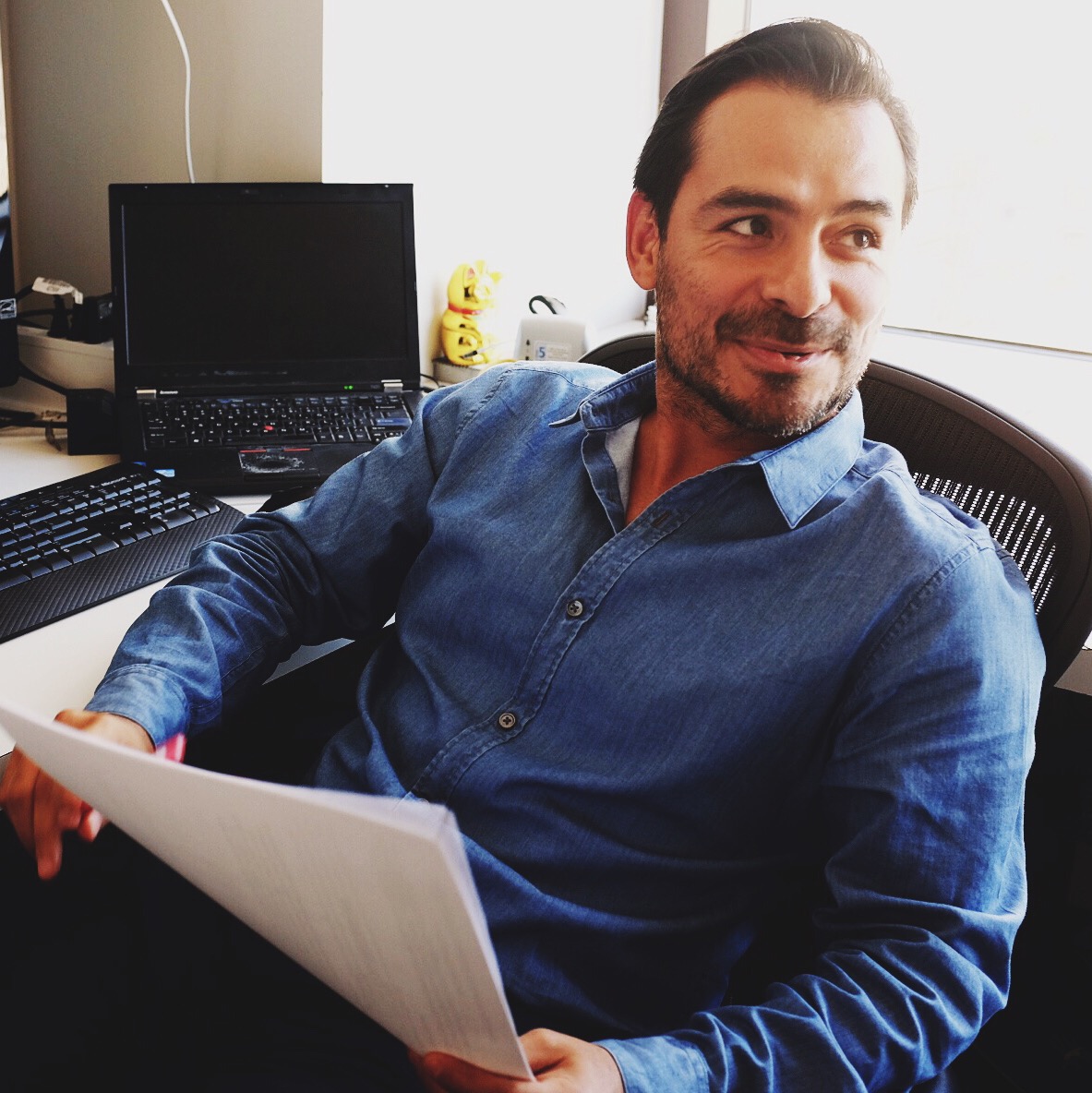
Francisco Sanchez
Francisco Sanchez is the special projects project manager at Swinerton Builders, a general contractor. Sanchez has lived and worked in downtown for almost ten years now. He will be moving to Echo Park once construction for his new home is complete to avoid rent hikes in the city.
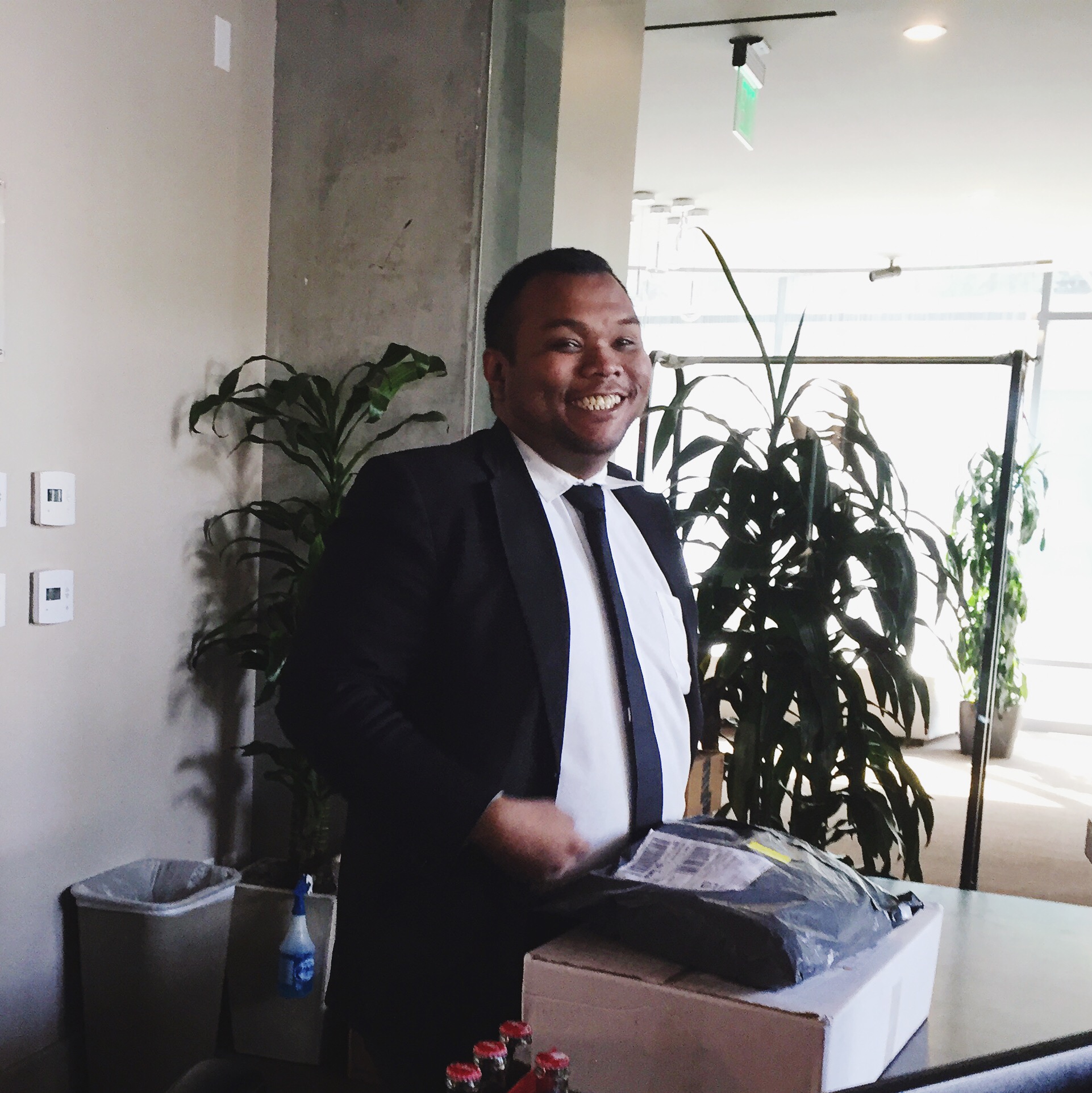
Anthony George
Anthony George is the concierge at Met Lofts, a luxury downtown apartment. Along with the regular concierge job description, the building also requires him to know all the residents, including memorizing residents' apartment units.
More stories from Districts of LA
There are as many engaging stories in Los Angeles as there are people. Here are just three of them.

Taste of L.A. Street Side Vendors
Your favorite sidewalk lunchtime picks may be in jeopardy as L.A. City Council cracks down on illegal street vending.
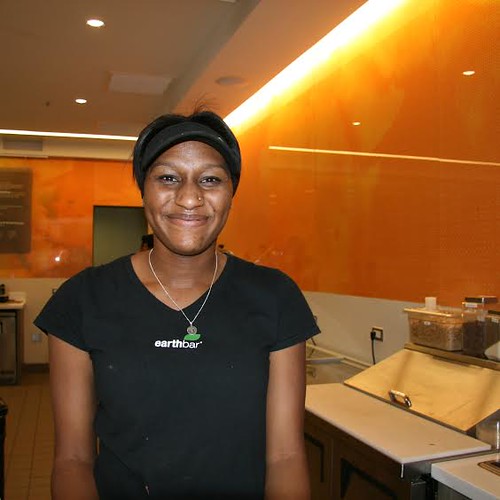
The Faces of Minimum Wage in Los Angeles' Financial District
Several L.A. residents in the Financial District and Bunker Hill said they've struggled to make ends meet while working for minimum wage. See their faces and hear their stories.
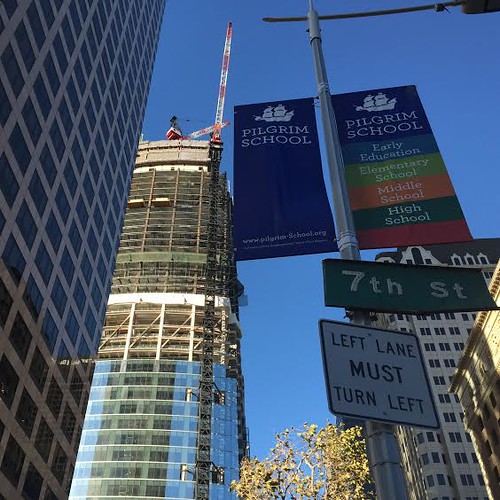
Seventh Heaven in Downtown L.A.
Restaurant Row is an aggregation of restaurants ranging from sushi to french cuisine. Take a tour of this part of 7th street and find out how the unique grouping grew from a single restaurant to a major player in the economic development in downtown L.A.